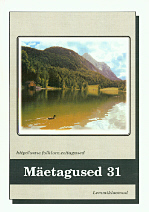Jumaluste lemmikloomad ja ennustamine elundite põhjal
Pets of Deities and Divination from Internal Organs
Author(s): Enn ErnitsSubject(s): Customs / Folklore
Published by: Eesti Kirjandusmuuseum
Summary/Abstract: Foretelling fate, course of disease, the weather, etc. has always been considered important. An important role in mantic lore has always been played by forecasts based on the bones and internal organs of the sacrificial animal or the pet of a deity. Based on the changes of the liver, less commonly heart and lungs of ruminants and other mammals, for example, the Etruscan haruspices foretold who is depicted on a gravure by means of a trachea, lungs and liver (4th c BC). Observation of the liver was probably studied with the help of models. In 1877, a bronze lamb liver was found in Italy featuring many details. The internal surface of the liver is divided into sectors dedicated to favourable and unfavourable deities. Etruscan methods of divination may originate from Ancient Orient. Professor of anatomy, Ludwig Stieda (1900) compared the Etruscan liver diagram with a Mesopotamian find a thousand years older. From there, the art of liver observation spread via the Hetites to Greece and Etruria. Before the cuneiform writing was deciphered, hints on Bablyonian hepatoscopy could be read in the Bible. Babylonian liver models resemble the Etruscan bronze liver. The Ninive library texts name more than a dozen liver-related terms. In the prostasis Babylonians considered the individual features and pathological changes of the liver. The more rare the change in the liver, the more weight the apodoses had. Babylonians also studied the intestines of sheep, paying attention to the positioning of the organs. There are many records of different peoples using the liver and spleen of various domestic and wild animals to forecast weather. There are hundreds of ancient architectural objects, labyrinths composed of cobblestones in the northern countries that are considered to be a model of the intestines of the sacrificial animal, i.e. the colon of ruminants. In ancient China, forecasts were based on mammalian bones and the cracks of a turtle's shell. Wide popularity was enjoyed in earlier times by omoplastoscopy or forecasting by the shoulder-blade (e.g. in North America, Ireland, Siberia, Mongolia, China). The Khazakhs distinguished at least seven subsections and a number of regions on a fire-heated shoulder-blade, the cracks at angles forming in different regions expressing various groups of omens.
Journal: Mäetagused. Hüperajakiri
- Issue Year: 2006
- Issue No: 31
- Page Range: 15-28
- Page Count: 14
- Language: Estonian

